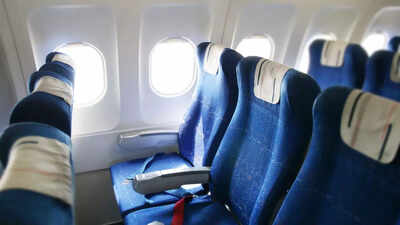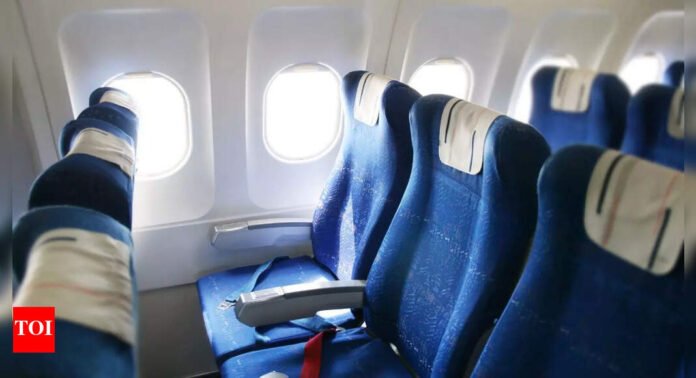Is 11A the Safest Seat on a Plane? Experts Explain

A Survivor’s Story from the Ahmedabad Air Crash
A tragic Air India crash in Ahmedabad left only one survivor. This has led many to wonder: Is there a “safest seat” on a plane?
Viswashkumar Ramesh was the sole survivor of the Boeing 787 Dreamliner disaster. He sat in seat 11A, next to an emergency exit. While his survival has sparked interest, experts say many factors determine safety in a crash.
Every crash is different. Being close to exits can help, but other things like aircraft design, impact location, fire, and passenger behavior also matter.
Is 11A the Safest Seat on a Plane? Experts Disagree
A London-bound Air India Boeing 787 Dreamliner crashed soon after taking off from Ahmedabad. Everyone on board perished except for one passenger, Viswashkumar Ramesh, who sat in 11A.
Ramesh escaped through an emergency door. He mentioned the nearby emergency exit and his quick escape before the plane caught fire. But does this make 11A the safest seat? Experts say no.
‘Every Accident is Different’: Why No Seat Guarantees Safety
“There is no universally safest seat on an airplane,” says Mitchell Fox, a director at the Flight Safety Foundation. “Each accident is different. It is impossible to predict survival based on seat location alone.”
The Boeing 787 Dreamliner has many configurations. The location of emergency exits, aisle spacing, and seat pitch can vary. What was 11A near an exit in this case could be a window seat far from an exit in another setup.
Ron Bartsch, chairman of AvLaw Aviation Consulting, agrees. “In this case, the passenger sat next to the emergency exit, which was the safest seat that day. But it’s not always 11A; it’s just 11A on this setup of the Boeing 787.”
What Research Says About Seat Safety on a Plane
For years, people have believed that certain parts of the plane are safer. A 2007 Popular Mechanics study found that passengers seated toward the back had a higher survival rate. Some experts also suggest that seats near the wing might offer more safety in certain crashes.
However, these studies are based on past data and cannot predict the unique dynamics of each crash. As Bartsch emphasizes, even the most comprehensive studies cannot predict survival with certainty. In Ramesh’s case, the opposite exit door was blocked by a building, making one side of the aircraft useless for evacuation.
Exit Rows: Pros and Cons
Sitting next to an emergency exit may increase your chances of escaping quickly, especially if there is a fire or smoke. However, this assumes the exit door is functional and that the passenger can operate it under stress. Some doors may be jammed or blocked by debris.
Seats near emergency exits often come with responsibilities. Airlines typically restrict these seats to able-bodied adults who agree to assist in evacuation. In some cases, passengers might struggle to open the doors under pressure, delaying escape.
Aisle vs. Window: More Than Comfort
Aisle seats may allow quicker access to escape routes but expose passengers to a greater risk of head injury from falling luggage. Window seats, while often seen as “trapped” spots, can offer some protection from falling objects or passenger movement during panic. However, reaching the aisle and exit from a window seat during an emergency may take precious seconds.
Real-World Examples: Safety in Action
One of the best examples of effective evacuation comes from a January 2024 collision at Tokyo’s Haneda Airport. An Airbus A350 collided with a Coast Guard aircraft, killing five of the six crew members aboard the smaller plane. Remarkably, all 379 passengers and crew aboard the A350 survived, thanks to strict adherence to evacuation protocols and swift action by the crew.
This incident shows that passenger behavior and crew leadership are often more critical than seat choice in determining survival.
Safety Briefings: An Undervalued Lifesaver
Experts agree that paying attention to pre-flight safety briefings is one of the best ways passengers can improve their odds of survival. These briefings cover crucial information:
- How to fasten and adjust seat belts properly
- How to adopt the correct brace position during impact
- Where to find life vests and oxygen masks
- How to locate and operate the nearest emergency exit
A recommended tip is to count the number of rows between your seat and the nearest exit. This can be life-saving in a smoke-filled cabin with low visibility.
Advancements in Aircraft Design: A Hidden Hero
Despite high-profile crashes, modern commercial aircraft are safer than ever. Fox notes that cabin safety features have advanced significantly in recent decades. These include:
- Floor path lighting that illuminates escape routes
- Fire-retardant materials in seat fabrics and wall panels
- Advanced fire detection and extinguishing systems
- Improved exit designs for faster, more intuitive egress
Such improvements aim not just to prevent accidents but to maximize survival when accidents do occur.



